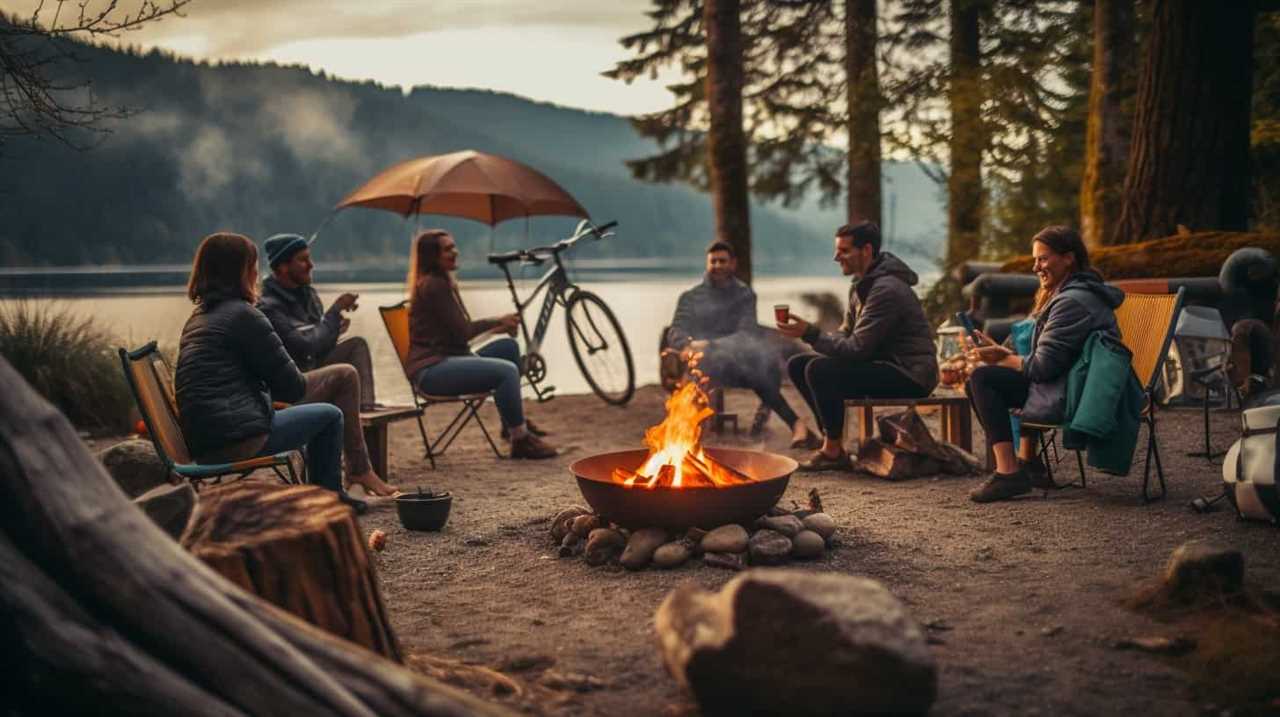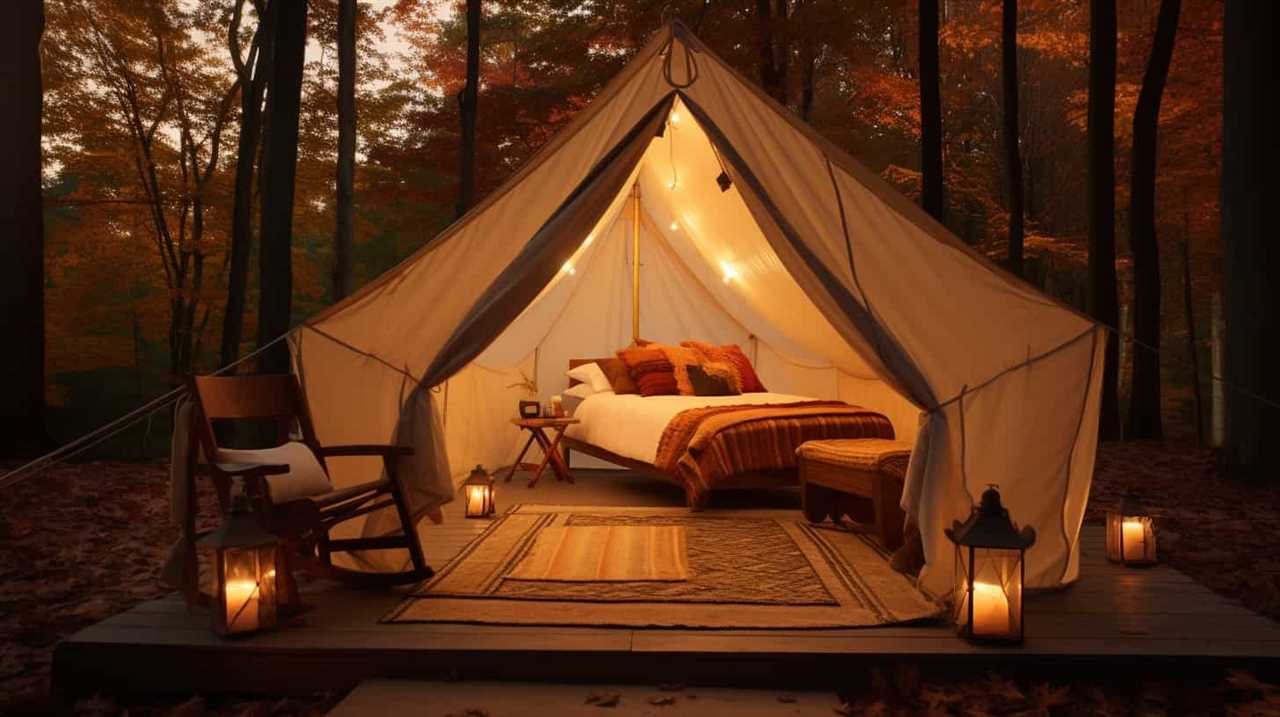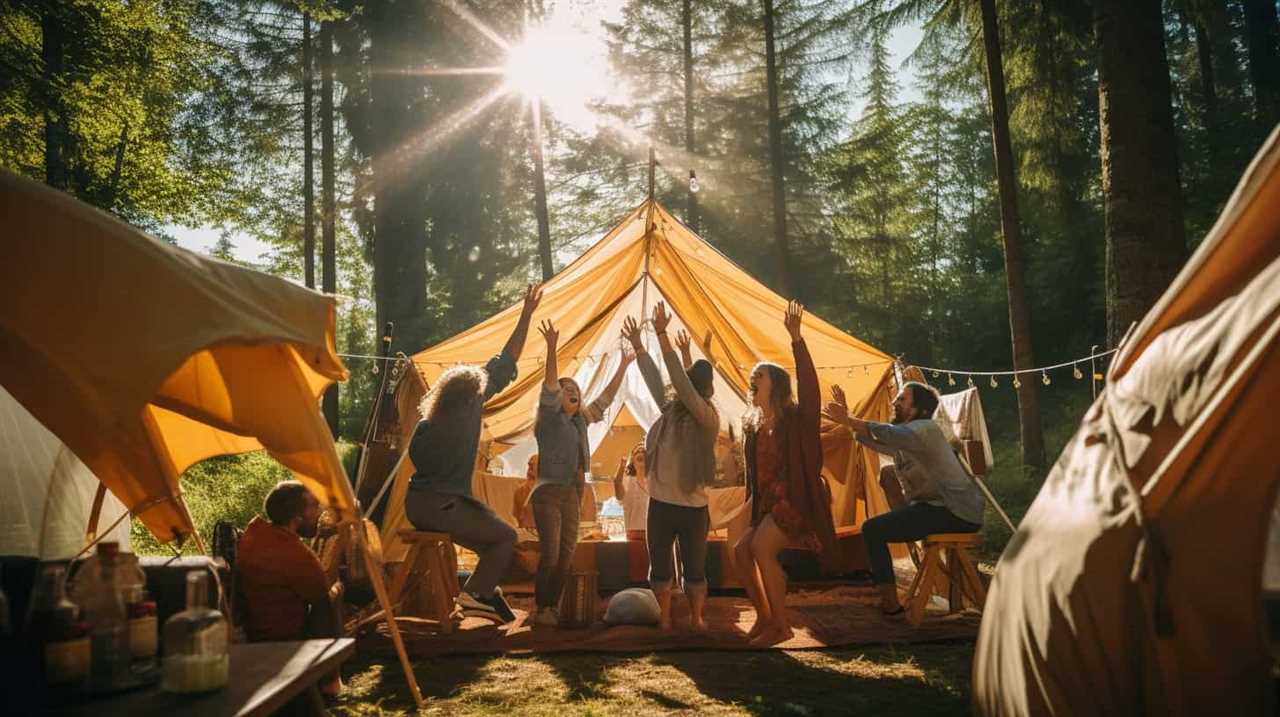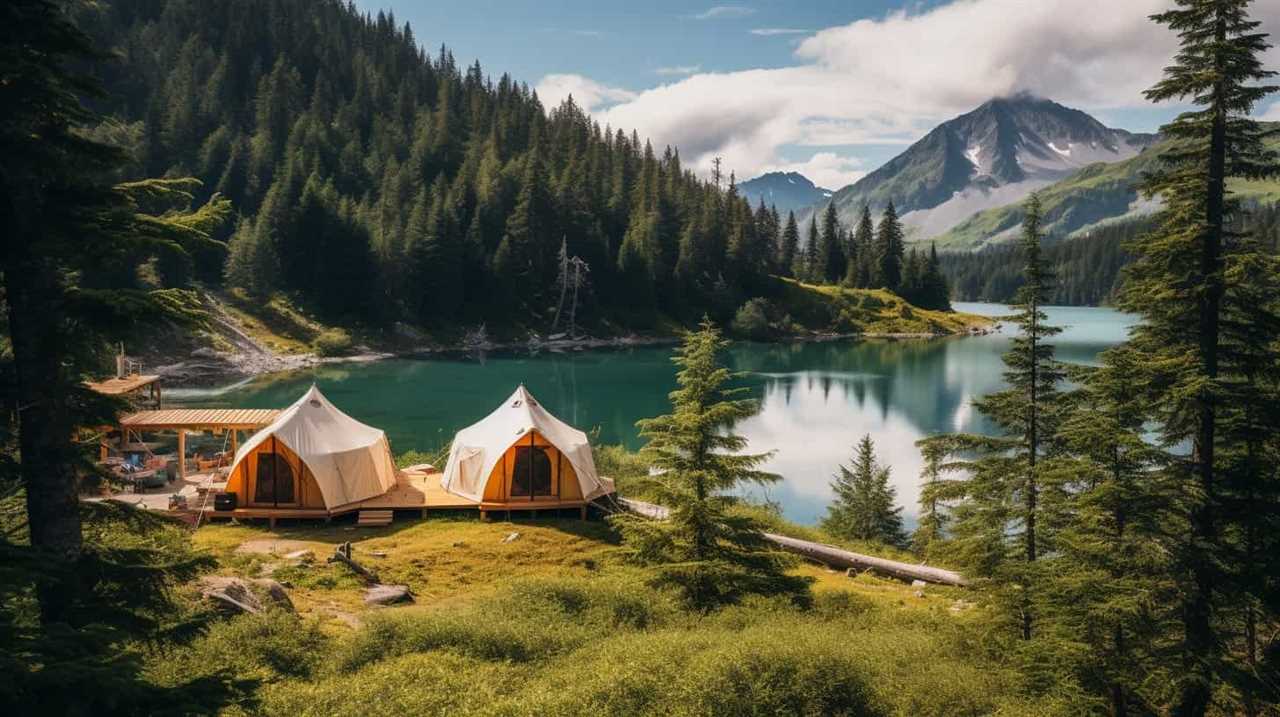Are you getting ready for a glamping adventure and looking to do it in an eco-friendly way? Don’t worry, we’ve got you covered!
In this article, we’ll share some practical and eco-friendly practices for your glamorous camping adventure.
From choosing accommodations that prioritize the environment to minimizing waste and embracing renewable energy sources, we’ll show you how to enjoy the great outdoors while leaving a minimal footprint.
Get ready to have a fantastic glamping experience that’s both luxurious and environmentally conscious.

Let’s dive in!
Key Takeaways
- Choose glamping accommodations with sustainable architecture and green building materials
- Embrace renewable energy sources and energy conservation by using portable solar panels and energy-saving devices
- Opt for local and organic dining options to support sustainable agriculture and enjoy chemical-free meals
- Respect wildlife and natural surroundings by practicing ethical photography, sticking to designated trails, and minimizing waste with reusable items
Choosing Eco-Friendly Accommodations
When planning our glamping trips, we prioritize choosing eco-friendly accommodations. Sustainable architecture and the use of green building materials are key factors we consider when seeking out the perfect glamping spot.
Sustainable architecture involves designing structures that have a minimal impact on the environment, using techniques like passive heating and cooling, natural lighting, and renewable energy sources.
Green building materials, on the other hand, are materials that are sourced responsibly and have a reduced carbon footprint. These materials can include reclaimed wood, recycled metal, and low VOC paints.
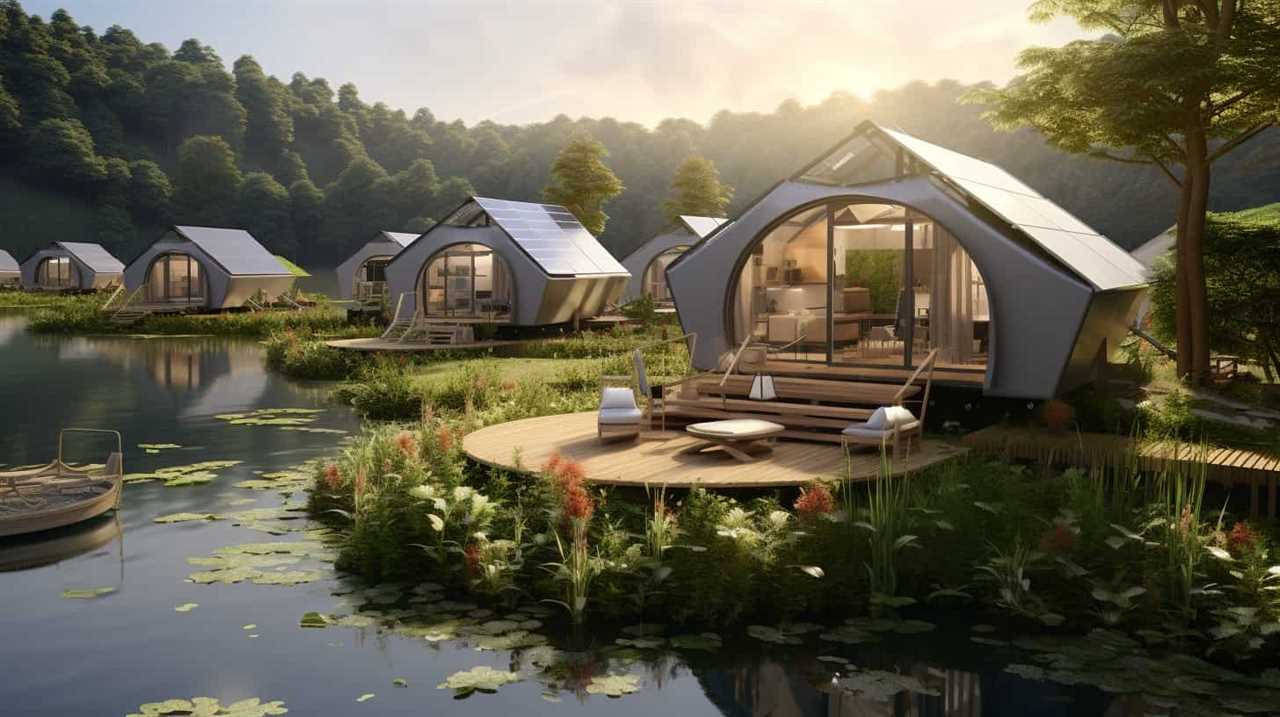
Packing Light and Minimizing Waste
To further minimize our environmental impact, we focus on packing light and minimizing waste during our glamping trips. Here are some practical tips to help you do the same:
- Choose eco-friendly toiletries: Opt for biodegradable and environmentally friendly toiletries to reduce the harm caused to nature. Look for products that are free from harmful chemicals and come in recyclable packaging.
- Pack reusable water bottles: Instead of relying on single-use plastic bottles, bring your own reusable water bottles. This not only reduces waste but also helps you stay hydrated throughout your trip.
- Use reusable utensils and containers: Instead of using disposable cutlery and containers, pack your own reusable ones. This way, you can enjoy your meals without contributing to plastic waste.
- Minimize packaging: When packing, try to choose products with minimal packaging. This helps reduce waste and makes your luggage lighter.
- Practice proper waste management: Make sure you dispose of your waste responsibly by using designated recycling and garbage bins. Leave the campsite or glamping site as clean as you found it.
Embracing Renewable Energy Sources
We prioritize embracing renewable energy sources during our glamping trips. One of the most popular and accessible options is solar power. By investing in portable solar panels or solar-powered devices, we can harness the sun’s energy to power our camping essentials, such as lights, chargers, and even small appliances.
Not only is solar power sustainable, but it also allows us to reduce our reliance on traditional energy sources. To maximize energy efficiency, we recommend using energy-saving LED lights and choosing low-power consumption devices. Additionally, it’s important to conserve energy by turning off lights and appliances when not in use.
Exploring Local and Organic Dining Options
Continuing our commitment to sustainable practices, we further enhance our glamping experience by exploring local and organic dining options. By embracing farm-to-table and sustainable sourcing, we not only support local communities but also nourish our bodies with wholesome, environmentally friendly meals.

Here are five reasons why incorporating local and organic dining options into our glamping trips is a game-changer:
- Freshness: Indulge in the taste of freshly picked ingredients, bursting with flavor and nutrients.
- Environmental Impact: Reduce your carbon footprint by supporting local farmers who practice sustainable agriculture.
- Community Support: Connect with the local community and contribute to their economic growth.
- Health Benefits: Enjoy meals free from harmful chemicals, pesticides, and GMOs, promoting overall well-being.
- Culinary Adventure: Immerse yourself in the vibrant flavors and unique culinary traditions of the region, making each meal a memorable experience.
Respecting Wildlife and Natural Surroundings
Exploring local and organic dining options enhances our glamping experience, but it’s equally essential to prioritize respecting wildlife and natural surroundings.
When it comes to wildlife, it’s important to practice ethical photography. This means keeping a safe distance from animals, using telephoto lenses instead of approaching them, and avoiding any actions that may disturb or stress them. By doing so, we can capture beautiful moments while ensuring the well-being of the wildlife.
Additionally, responsible hiking is crucial for preserving the natural surroundings. Stick to designated trails to avoid trampling delicate plants or disturbing animal habitats. Avoid littering and bring reusable water bottles and bags to minimize waste.
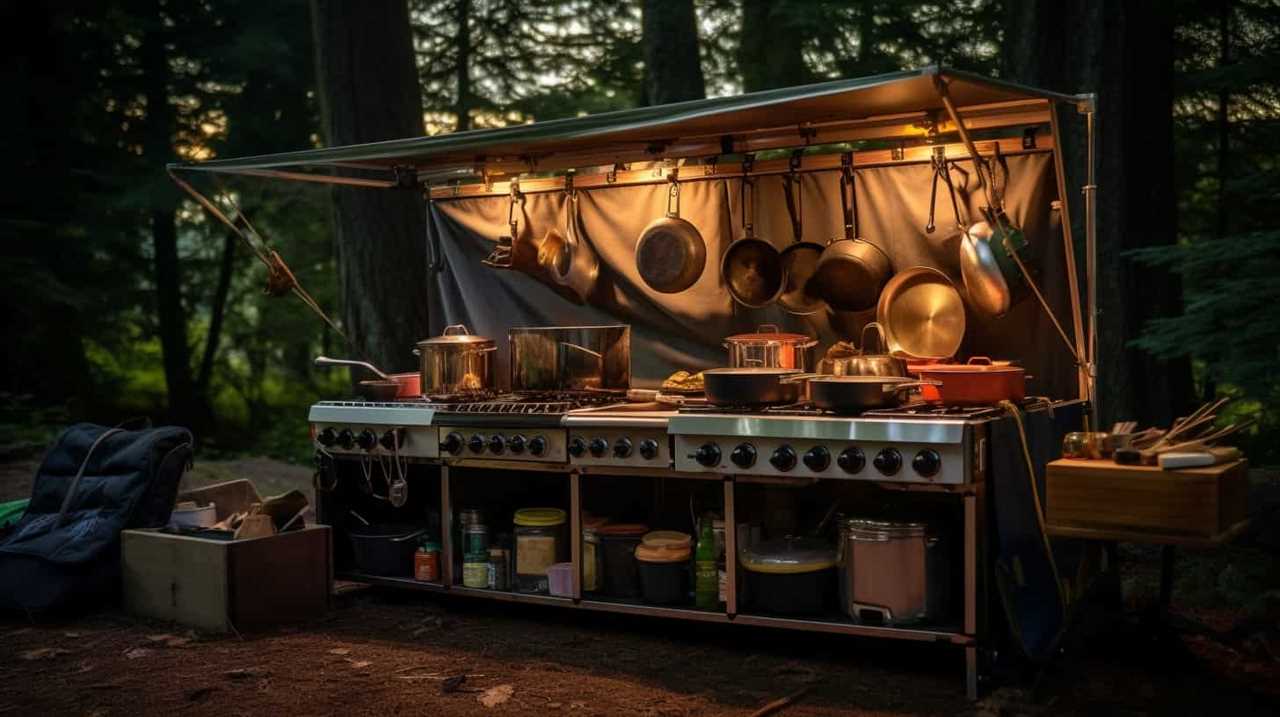
Supporting Local Communities and Conservation Efforts
To contribute to the sustainability of glamping trips, we actively engage with local communities and support conservation efforts. This not only helps us create a positive impact on the environment but also fosters a sense of connection and support for the people living in the area. Here are some ways we prioritize community engagement and conservation:
- Partnering with local businesses: By collaborating with local guides, artisans, and service providers, we contribute to the local economy and ensure that the benefits of tourism are distributed among the community.
- Supporting conservation projects: We allocate a portion of our profits to conservation organizations and projects that protect the natural resources and wildlife in the area.
- Educating guests: We provide information to our guests about the importance of conservation and sustainable practices, empowering them to make a positive impact during their glamping experience.
- Promoting responsible tourism: We encourage our guests to respect local customs and traditions, minimize their ecological footprint, and engage in activities that support the local community.
- Involving local communities: We actively involve local communities in decision-making processes, seeking their input and feedback to ensure that our glamping trips align with their needs and aspirations.
By actively engaging with local communities and supporting conservation efforts, we strive to create a sustainable and mutually beneficial glamping experience for everyone involved.
Together, we can make a positive difference in the world and protect the natural beauty of our destinations.
Frequently Asked Questions
Are There Any Specific Regulations or Guidelines for Glamping Accommodations to Be Considered Eco-Friendly?
There are regulations and guidelines to ensure eco-friendly glamping accommodations. These include using renewable energy, obtaining certifications and labels, minimizing waste, practicing sustainable habits, supporting local communities, and contributing to conservation efforts.
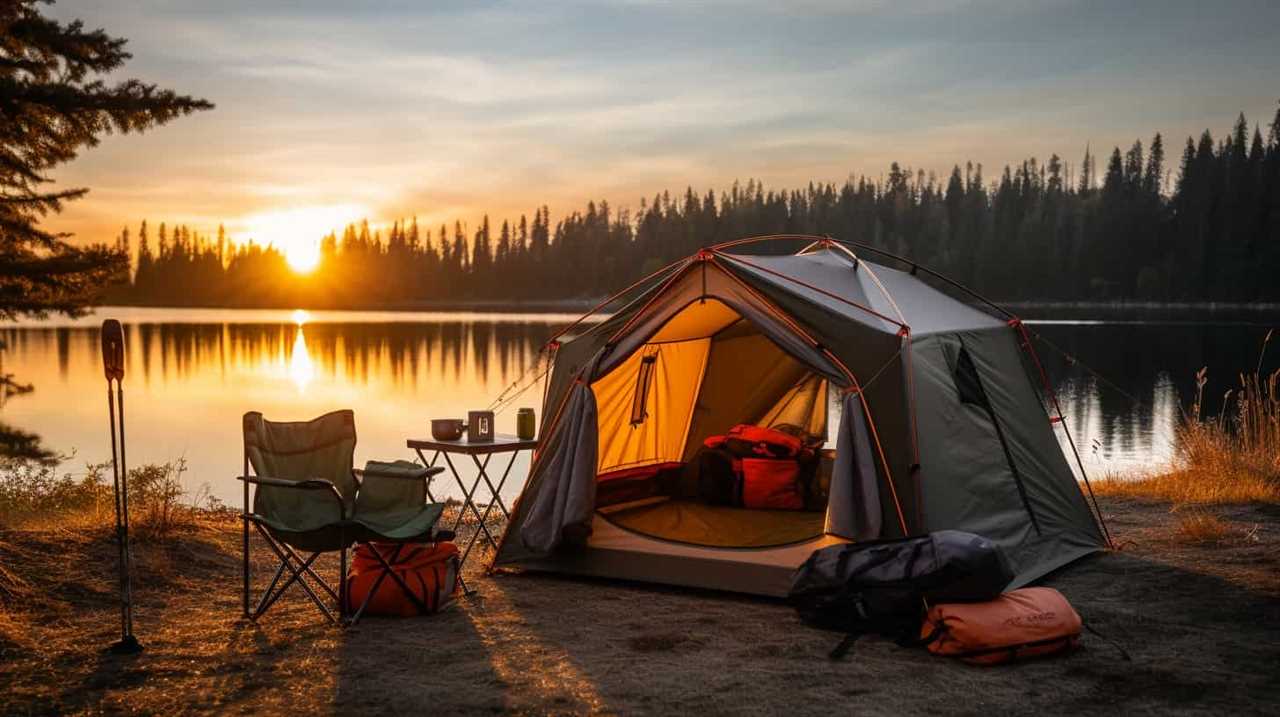
How Can I Ensure That the Glamping Site I Choose Is Actively Involved in Renewable Energy Practices?
To ensure the glamping site we choose is involved in renewable energy practices, we can research their sources of renewable energy, such as solar or wind power. Additionally, we should inquire about their sustainability measures to guarantee eco-friendly practices.
Are There Any Specific Certifications or Labels I Should Look for When Choosing Eco-Friendly Dining Options During My Glamping Trip?
When choosing eco-friendly dining options during our glamping trip, we should look for certifications like LEED or Green Restaurant Association, ensuring sustainable practices are in place to minimize our environmental impact.
What Are Some Ways to Minimize Waste and Practice Sustainable Habits While Participating in Glamping Activities?
To minimize waste and practice sustainable habits during glamping, we can bring reusable water bottles and food containers, use biodegradable toiletries, and pack out all trash. It’s important to leave nature as we found it.
How Can I Support Local Communities and Conservation Efforts During My Glamping Trip, Aside From Choosing Eco-Friendly Accommodations?
To support local communities and conservation efforts during our glamping trip, we can explore local markets, buy handmade goods from artisans, and opt for sustainable transportation options like biking or walking.
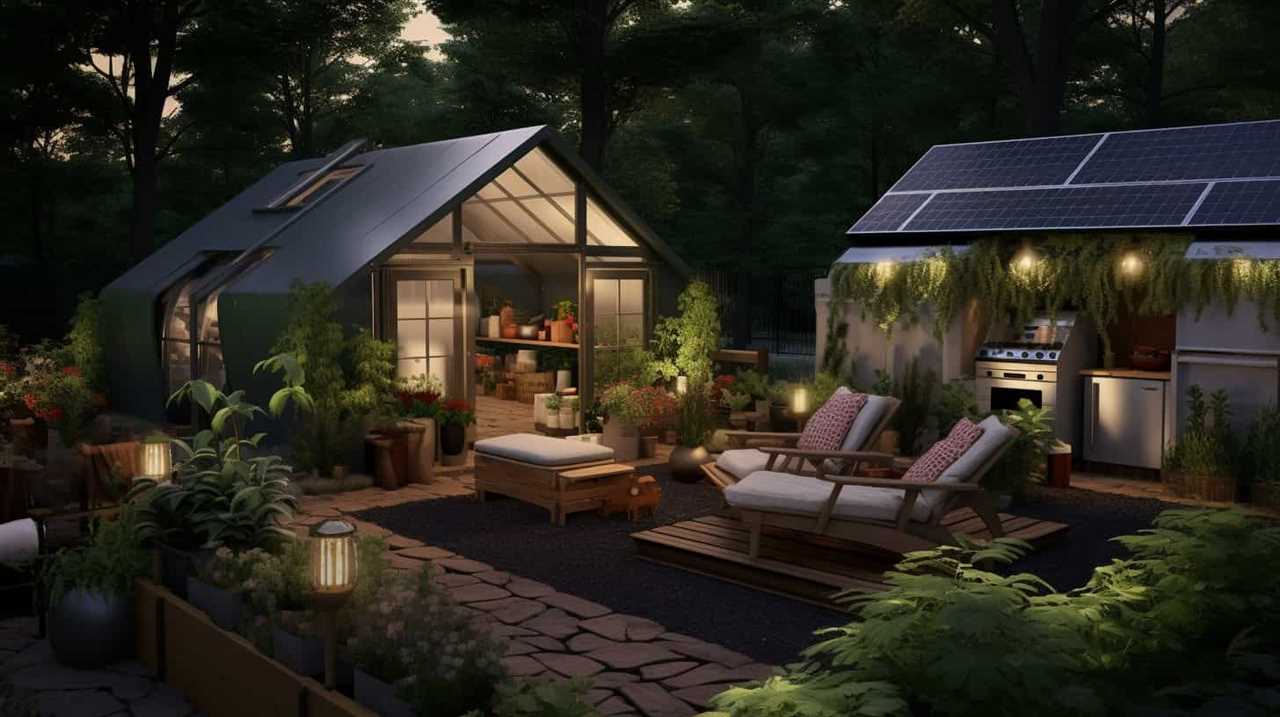
How Can I Implement Sustainable Practices for Glamping Trips?
When planning glamping trips, consider implementing the best sustainable glamping practices. Choose eco-friendly accommodations, practice Leave No Trace principles, and use reusable and recyclable materials. Educate guests on sustainable living and support local businesses. Minimize waste and energy consumption to preserve the natural environment for future generations.
Conclusion
In conclusion, by choosing eco-friendly accommodations, packing light and minimizing waste, embracing renewable energy sources, exploring local and organic dining options, respecting wildlife and natural surroundings, and supporting local communities and conservation efforts, we can ensure that our glamping trips are sustainable and leave a positive impact on the environment.
So, why not make a difference and enjoy the beauty of nature at the same time?


